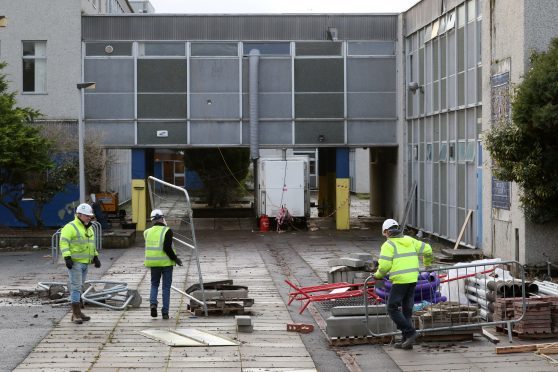Specialist workers have started demolishing the asbestos-filled former Inverness Royal Academy buildings.
Highland Council contractors have been on the site in the Culduthel area for two weeks, and are expected to have cleared it by early next year.
The school had served the community for four decades, but a new £34million facility was opened next to the former buildings this summer.
A new playground, car parking, and part of two new all-weather sports pitches are due to be built on the site of the old classrooms once they have been bulldozed.
The work is expected to take several weeks to complete, however, because the former school buildings contain large amounts of potentially hazardous asbestos.
The council has said that “all locations and types of asbestos” are recorded on an asbestos register, and that it has been “monitored at regular intervals” to manage the risk and prevent harm to workers.
Specialist contractors are being brought in for the project, which is being led by Hub North Scotland Limited and Morrison Construction.
Inverness Royal Academy was founded in 1792, when it replaced the town grammar school.
In 1793 a Royal Charter was obtained from King George III and, as Inverness Royal Academy, the school operated on Academy Street until 1895, when it moved to Midmills Road in the Crown area.
This building housed the academy until August 1977 when part of the school moved to a new site in Culduthel, and two years later the school completed its switch to the current location.
The new school building was hit by problems earlier this year, just weeks after opening.
After several delays to the handover date, it emerged in September that the school’s gas installations had malfunctioned, while power outages were also been reported, as well as issues relating to the computers and the management of pupil flow during lunch breaks.
The new school can accommodate 1,420 pupils and has 171,824sq ft of floor space, including 39 practical, 40 non-practical and five tutorial classrooms, plus six rooms for Gaelic teaching.
It was built larger than the 1,153-pupil former building to accommodate the growth in the roll due to housing developments in the area, and the projected increase in the uptake of Gaelic medium education.
